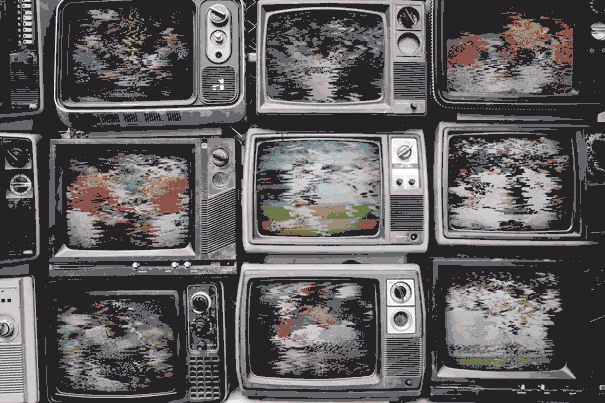Thinning Internet Traffic on Cable’s Fat Pipes
- Share via
As they battle local phone companies over consumer Internet services, cable TV operators enjoy one huge advantage: They own the fattest pipes into the home.
The drawback is that those pipes aren’t very smart. Like cars on a freeway, all traffic on the cable data channels competes for space on an equal footing.
For the record:
12:00 a.m. Oct. 11, 2001 FOR THE RECORD
Los Angeles Times Thursday October 11, 2001 Home Edition Part A Part A Page 2 A2 Desk 1 inches; 22 words Type of Material: Correction
Kinetic Strategies--The president of Kinetic Strategies was misidentified in the Oct. 4 Digital Living Room column in Tech Times. His name is Michael Harris.
That’s a problem for services such as phone calls or video conferences, which rely on steady streams of data. When there’s a lot of traffic on a data network, the streams get fragmented and delayed, wreaking havoc on sound and picture quality.
Last week, the cable industry took a major step toward raising the systems’ digital IQ. The industry’s research-and-development arm, CableLabs, gave its seal of approval to the first products able to sort one kind of data from another, giving higher priority to streams that can’t tolerate delays and Net congestion.
It sounds arcane, but the result is that cable operators will be able to use their data channels to offer more types of communications and entertainment. The possibilities include inexpensive phone lines, high-quality video from the Web and more affordable “always on” Net connections.
The new generation of gear also might shore up the biggest weakness in cable Internet services: the fact that all the data from an entire neighborhood travel on the same wire. That kind of sharing can lead to data traffic jams if the network isn’t managed well.
CableLabs’ specifications for the new generation of gear (known in the industry as DOCSIS 1.1, for Data-Over-Cable Service Interface Specifications) won’t change the fact that the cable data network is shared. But they provide tools to guard against congestion and guarantee extra speed to customers willing to pay for it.
Several top cable companies, including AT&T; Corp., Comcast Corp. and Charter Communications Inc., are already testing equipment built to DOCSIS 1.1. Consumers probably won’t see a widespread rollout of new services for a year or two, in part because only a few products have passed the CableLabs tests.
“This is a very significant milestone,” said Michael Hastings, president of Kinetic Strategies, a research firm specializing in high-speed Internet services. “DOCSIS 1.1 is the fundamental building block for all advanced [data] services that cable operators expect to offer.”
The cable companies’ foray into Net services grew out of their fierce competition with satellite TV companies, which have lured away some of the cable operators’ best customers by offering more channels and better reception.
To close the channel gap, cable companies started converting their systems from analog to digital. They also increased capacity by mixing fiber optics into their copper networks.
They soon discovered that digital technology changed the nature of their business, transforming it from one-way broadcasting to two-way communications.
Among other things, the switch to two-way digital systems enabled cable operators to offer Internet connections up to 50 times faster than the speediest dial-up modem.
Typically, cable operators dedicate all or part of two channels to handling Internet data--one channel for data being received by customers and another for data being sent. The first version of DOCSIS essentially has customers taking turns on the channels, with data being sent and received on a first-come, first-served basis.
The new generation of equipment, however, will be able to put selected users and data streams at the front of the line. Data that carry a phone call, for example, would get top priority. Business customers also could be guaranteed bandwidth, although they’d have to pay a higher fee.
The downside to guaranteeing bandwidth for some customers or services is that it leaves less capacity for the others, said Mark Coblitz, senior vice president of strategic planning at Comcast Corp. DOCSIS 1.1 tries to minimize such effects by packing more data into the pipeline, regardless of the priority.
Coblitz said the originalDOCSIS was fine for things, such as downloadable music, that don’t require an instantaneous exchange of data. What it can’t do well is provide reliable phone connections or deliver audio and video from the Web to an inexpensive cable set-top box.
With DOCSIS 1.1, cable operators will be able to offer phone services based on inexpensive Internet protocols, rather than trying to replicate the local phone companies’ dedicated connections.
The cable companies could try to go head to head with the phone companies, but they’re more likely to market low-cost second and third phone lines. They could also offer extra phone lines that a family could activate for weekend visitors or other special needs.
After phone service, Coblitz said, cable operators could use their data channels to offer video phones and high-quality movies on demand. The technology for these services is close to being finished, he said, although much work remains to be done on billing systems, customer service and other supporting pieces.
Another possibility in the short term, said Luisa Murcia, a technology vice president at AT&T;’s cable division, is bandwidth on demand.
A customer could sign up for a low-speed Internet service at a reduced price, then pay a fee to switch temporarily to a high-speed service when there’s an online game tournament or some massive software files to be downloaded.
*
Jon Healey covers the convergence of entertainment and technology. He can be reached at [email protected].







